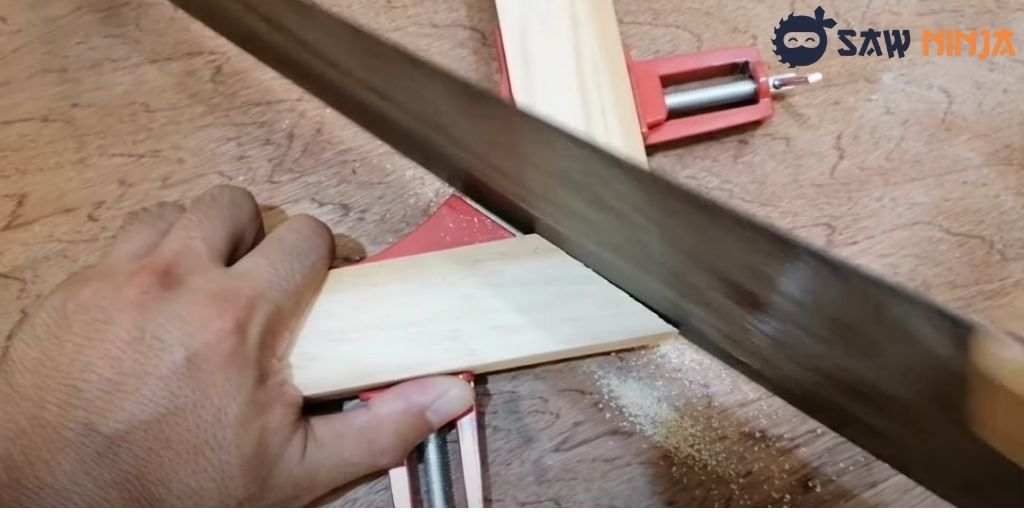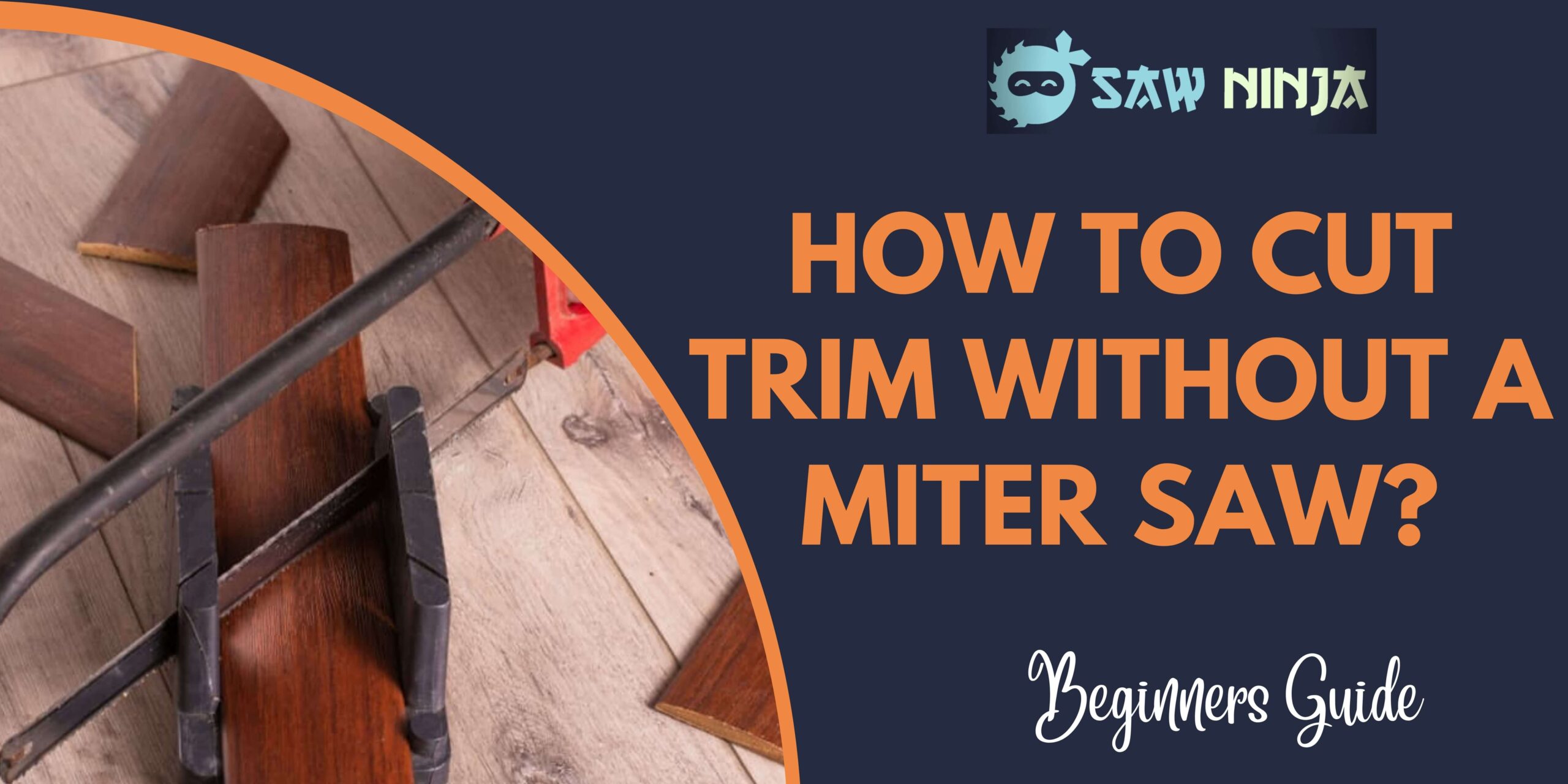Do you need to cut trim and don’t have a miter saw? You’re in luck! There are several ways to do it without one. In this blog post, I’ll show you three easy methods. So grab your measuring tape, level, and pencil, and let’s get started!
A Comprehensive Guide To Cuts Without a Miter Saw.
You don’t need a miter saw to make accurate cuts on trim. There are several ways to do it without one. Cutting trim without a miter saw is pretty straightforward. You can use a handsaw, circular saw, or even a utility knife to make clean cuts. Just be sure to measure twice and cut once!
>>> How To Change Blade on Craftsman Miter Saw
Here are three easy methods to cut trim without a miter saw:
- Use a handsaw.
- Use a circular saw.
- Use a utility knife.
Just be sure to measure twice and cut once! And you’ll be able to achieve clean, professional-looking results without a miter saw.
How to make the perfect cuts without a miter saw?
You don’t need a miter saw to make perfect cuts. There are several ways to do it without one. In this blog post, I’ll show you three easy methods. So grab your measuring tape, level, and pencil, and let’s get started!
Method 1: Use a Miter Box
If you don’t have a miter saw, you can use a miter box. A miter box is a simple device that helps you make precise cuts. It’s a rectangular box with slots cut into it at angles. To use a miter box, you’ll need a handsaw.
First, measure the piece of trim you need to cut. Then, set the miter box up so that the blade is in the correct position. For example, if you’re cutting at a 45-degree angle, you’ll need to set the blade at a 45-degree angle in the miter box.
Next, hold the trim against the side of the miter box and saw along with the slots. Be sure to follow the lines as closely as possible.
Method 2: Use a Coping Saw
Another option for making precise cuts is to use a coping saw. A coping saw is a small hand saw with a skinny blade. It’s designed for cutting intricate shapes.
To use a coping saw, start by measuring the trim you need to cut. Then, set the blade of the saw at the correct angle. For example, if you’re cutting at a 45-degree angle, you’ll need to set the blade at a 45-degree angle.
Next, hold the trim against the side of the coping saw and saw along the edge. Be sure to follow the lines as closely as possible.
Method 3: Use a Jigsaw
You can also use a jigsaw to make precise cuts. A jigsaw is a powerful tool that’s designed for cutting curves. It’s similar to a coping saw, but it has a thicker blade.
To use a jigsaw, start by measuring the trim you need to cut. Then, draw your cut line on the trim. For example, if you’re cutting at a 45-degree angle, you’ll need to draw the line at a 45-degree angle.
Next, set the blade of the jigsaw at the correct angle. Then, hold the trim against the side of the jigsaw and saw along the cut line. Be sure to follow the line as closely as possible.
Mistakes to Avoid:
Like most people, you probably think cutting trim without a miter saw is impossible. However, it’s not that difficult – as long as you avoid making these common mistakes!
Not Measuring Accurately:
One of the most important things to do when cutting trim (or anything else, for that matter) is to measure accurately. Otherwise, your trim won’t fit properly, and you’ll have gaps or uneven edges.
Not Using the Right Tools:
Another mistake to avoid is not using the right tools. If you’re trying to cut trim without a miter saw, you’ll need to use a different tool such as a hand saw, jigsaw, or circular saw.
Not Making Straight Cuts:
Another common mistake is not making straight cuts. This often happens when people try to cut trim without a miter saw and use a hand saw or jigsaw. If your cuts are not straight, your trim will not fit properly.
Not Cutting at the Right Angle:
Another mistake to avoid is not cutting at the right angle. When using a miter saw, it’s easy to ensure that your cuts are at the correct angle. However, you’ll need to be more careful when you’re cutting without a miter saw. Make sure that you measure the angle accurately and cut accordingly.
Not Sanding the Edges:
After cutting your trim, it’s essential to sand the edges ensure a smooth finish. If you don’t sand the edges, they may be rough and create gaps or uneven edges when you install the trim.
Conclusion:
So there you have it! Three different ways to cut trim without a miter saw. I hope this blog post was helpful and that you now feel confident about tackling this project on your own. If you have any questions, please feel free to leave a comment below or contact me directly. I’m always happy to help!
Frequently Asked Questions
What’s the best way to make precise cuts without a miter saw?
There are several ways to make precise cuts without a miter saw. If you don’t have a miter saw, you can use a miter box, a coping saw, or a jigsaw.
What’s the difference between a miter box and a coping saw?
A miter box is a simple device that helps you make precise cuts. It’s a rectangular box with slots cut into it at angles. To use a miter box, you’ll need a handsaw. A coping saw is a small hand saw with a fragile blade. It’s designed for cutting intricate shapes.
What’s the difference between a jigsaw and a coping saw?
A jigsaw is a powerful tool designed for cutting curves. It’s similar to a coping saw, but it has a thicker blade. A coping saw is a small hand saw with a skinny blade. It’s designed for cutting intricate shapes.
